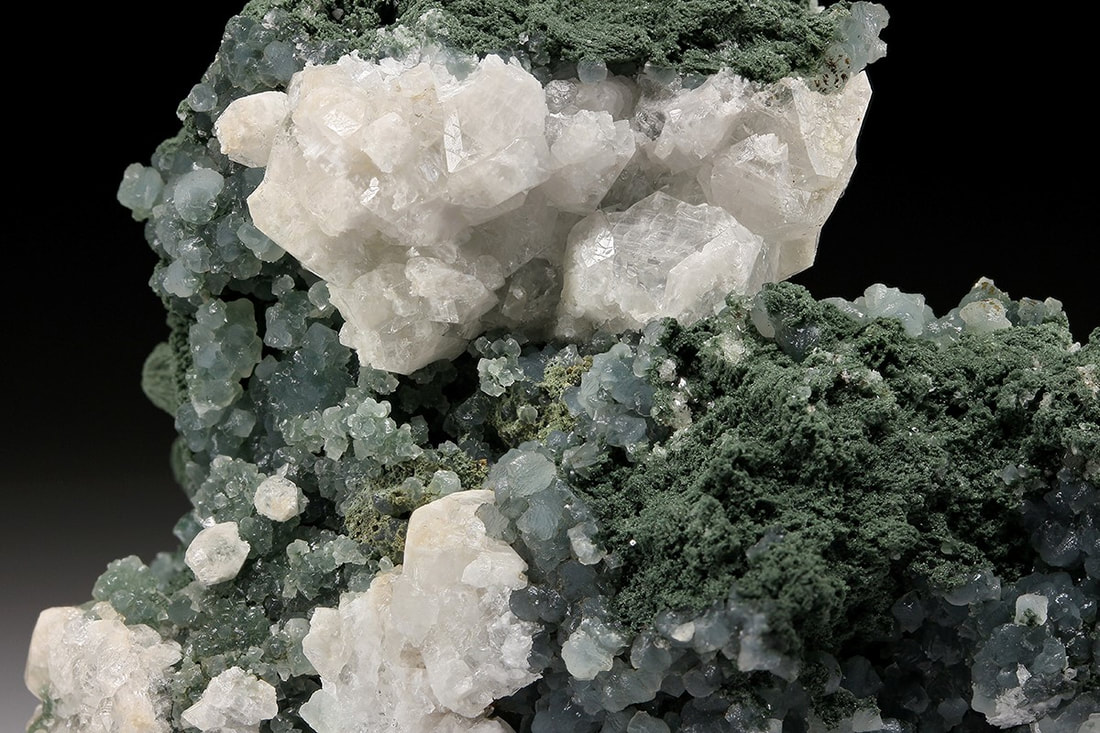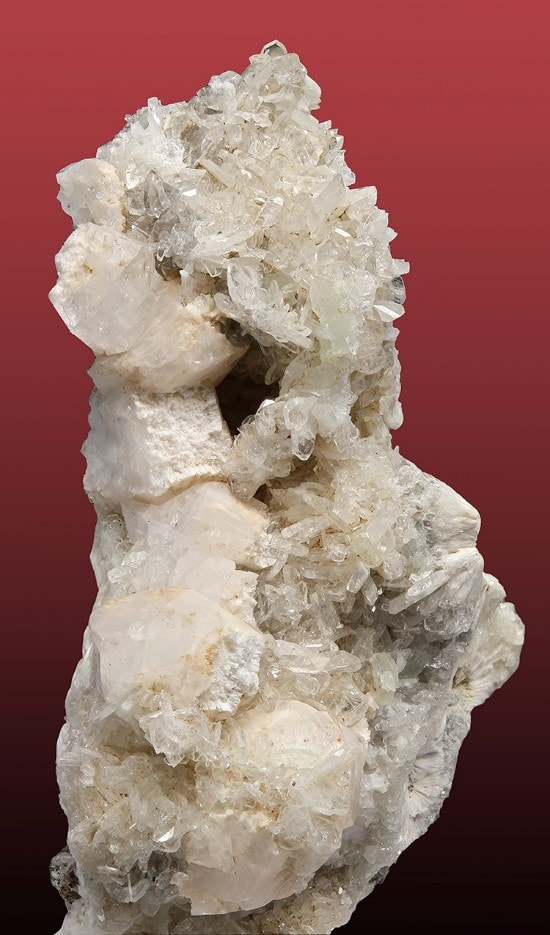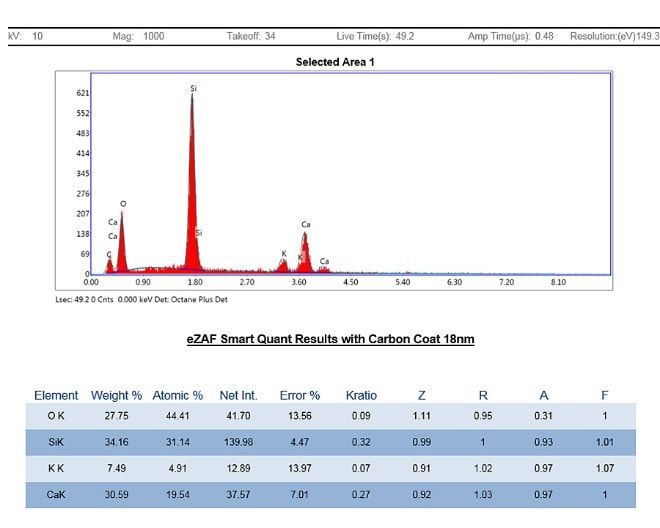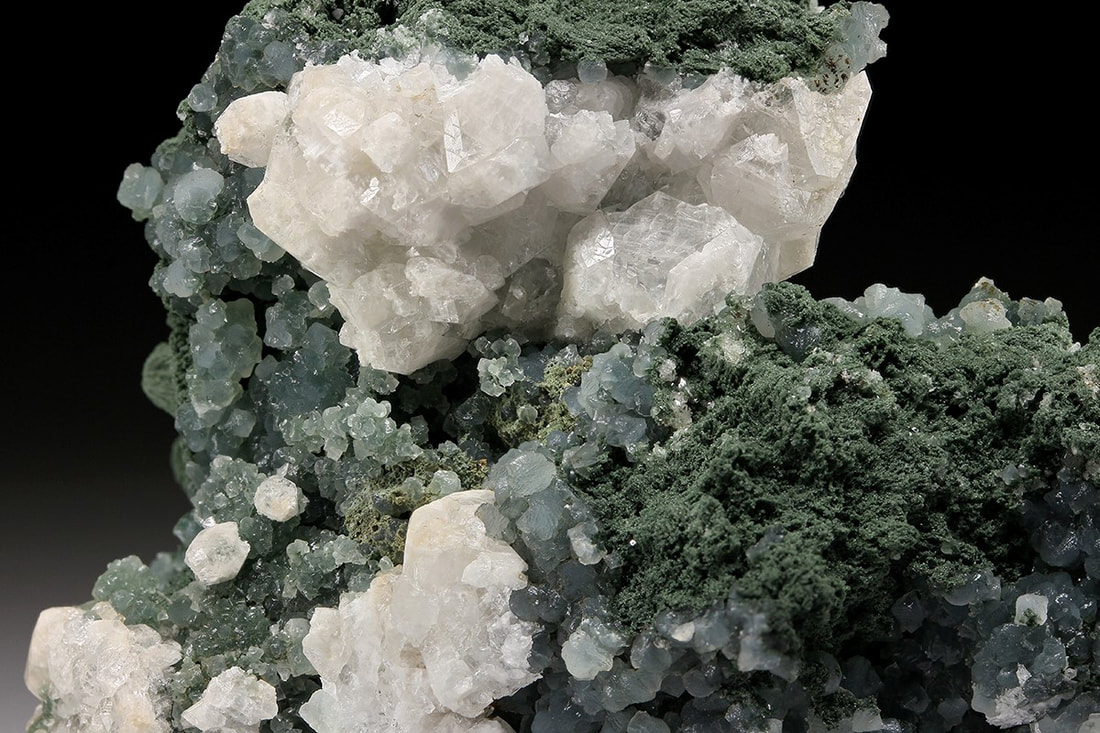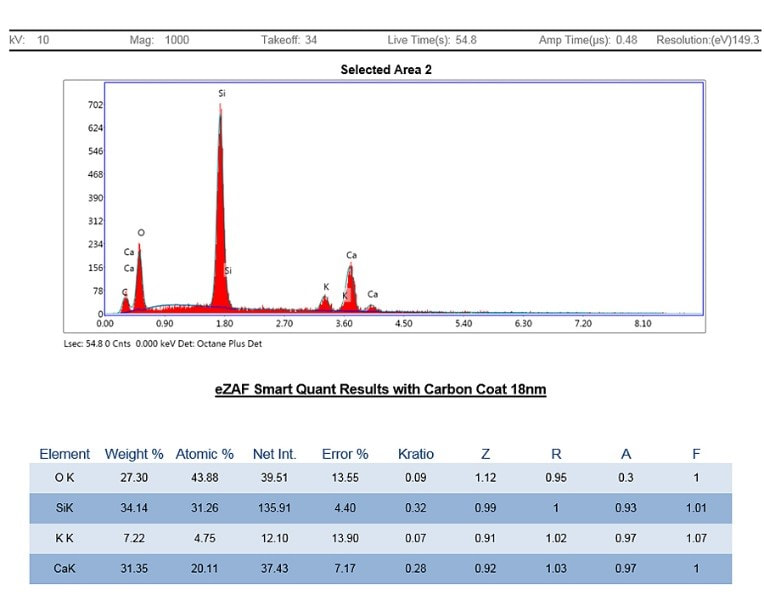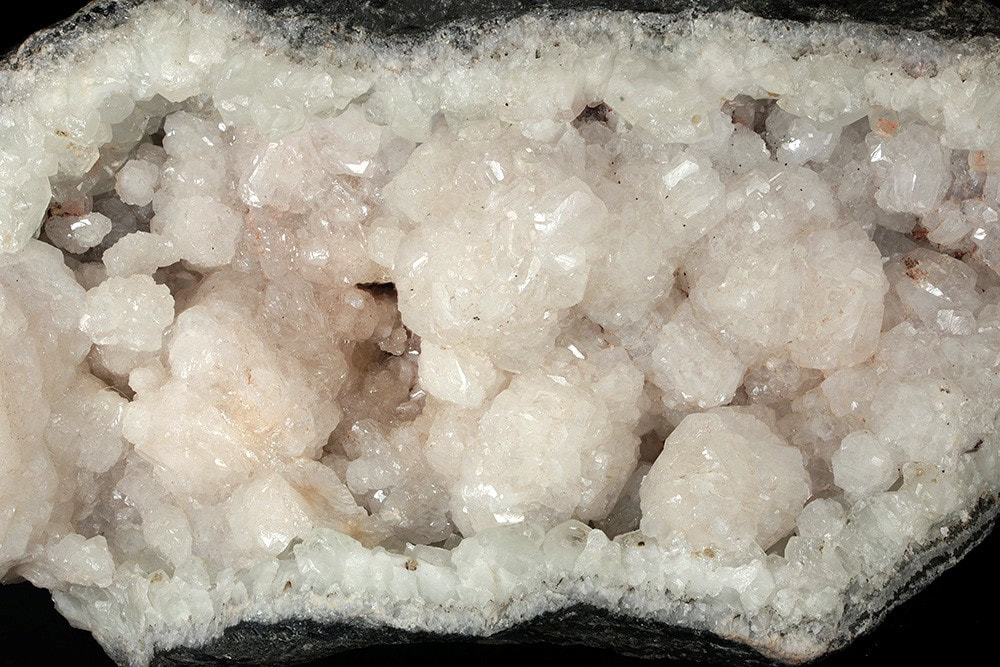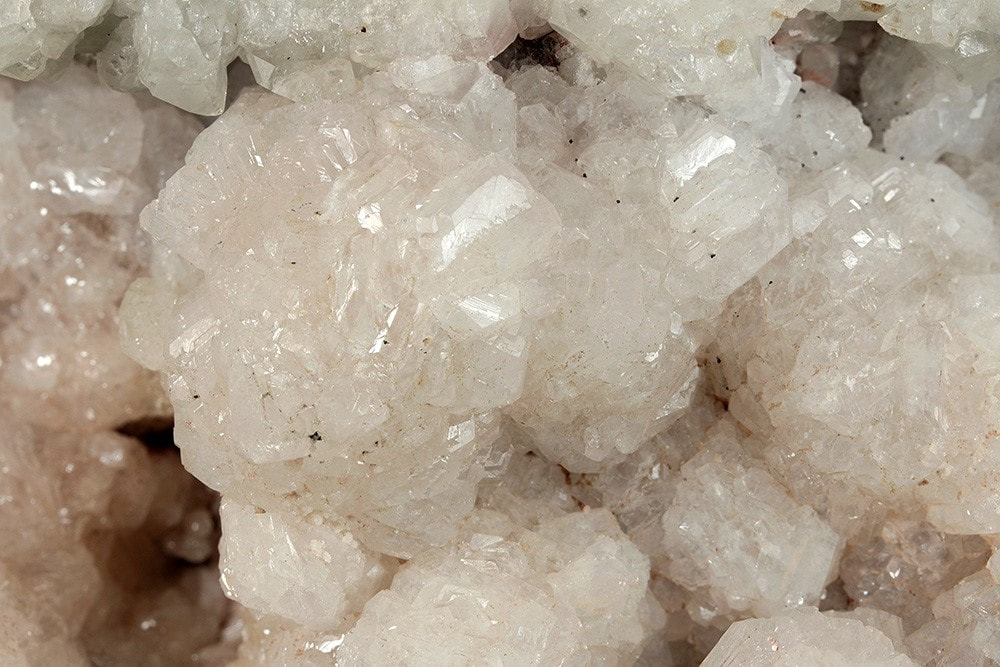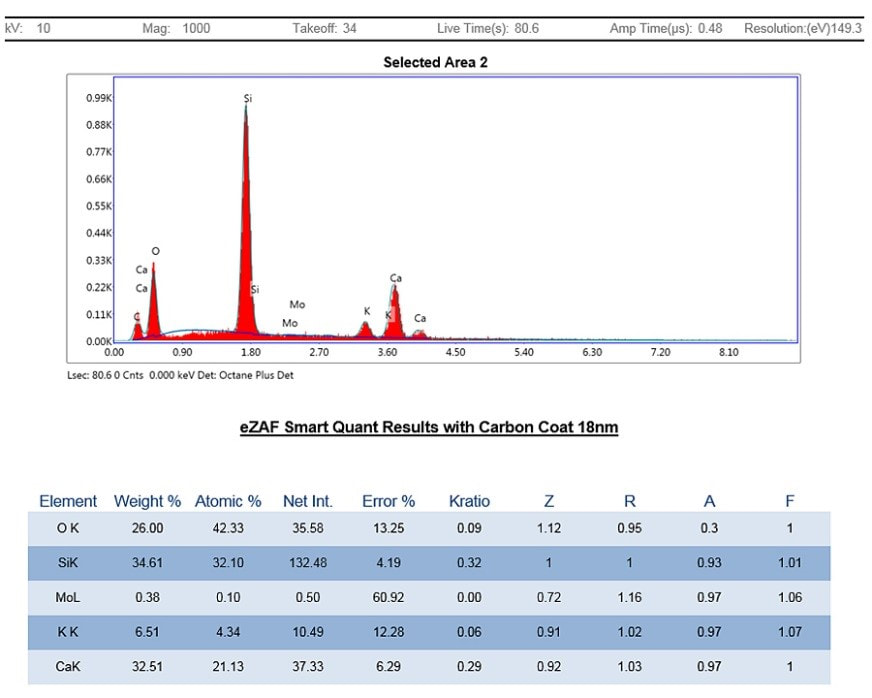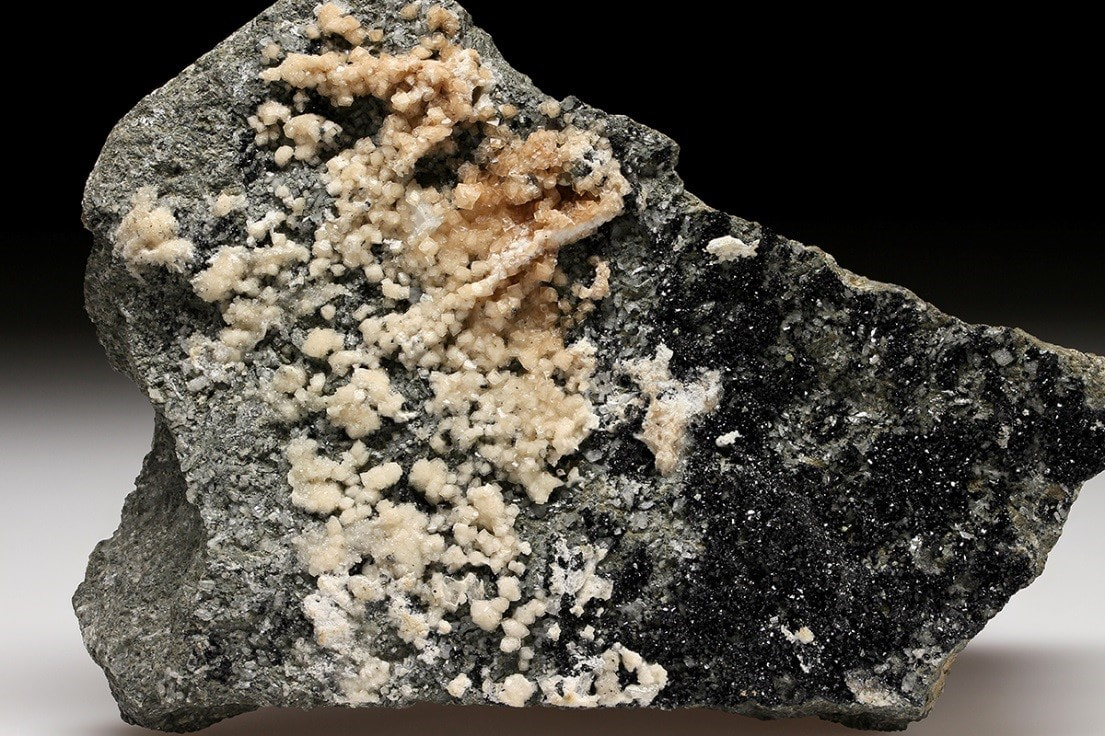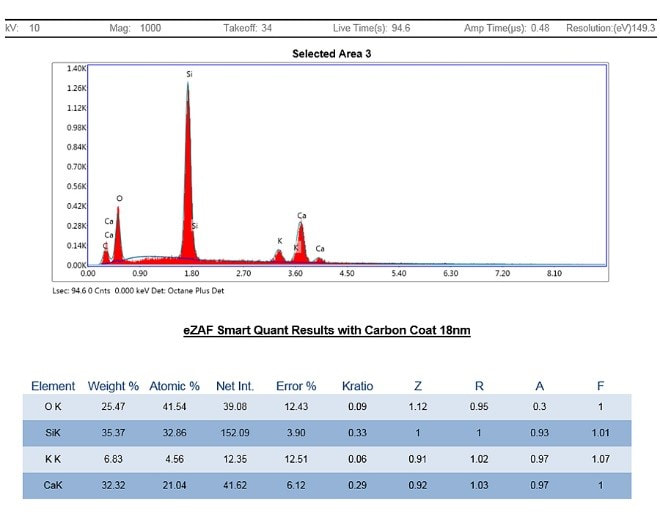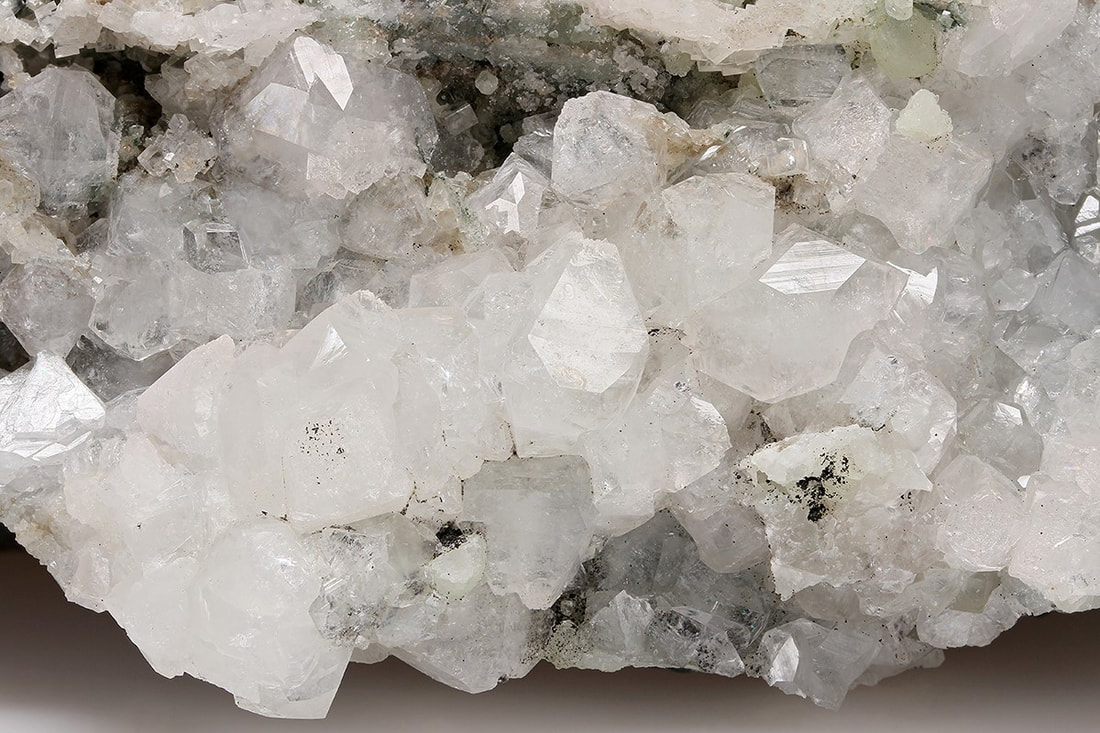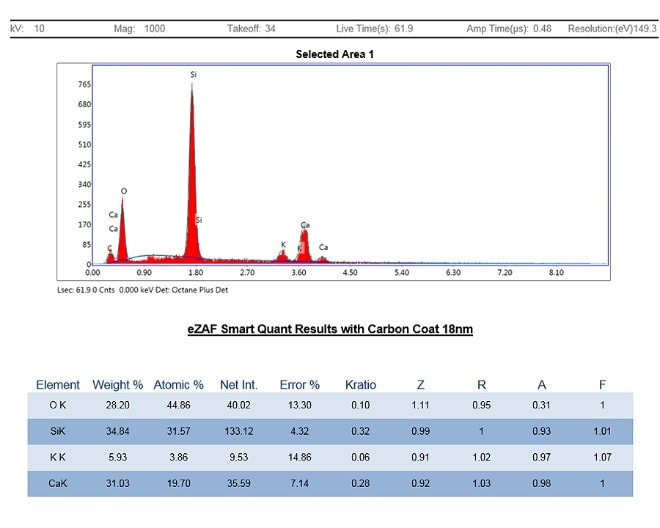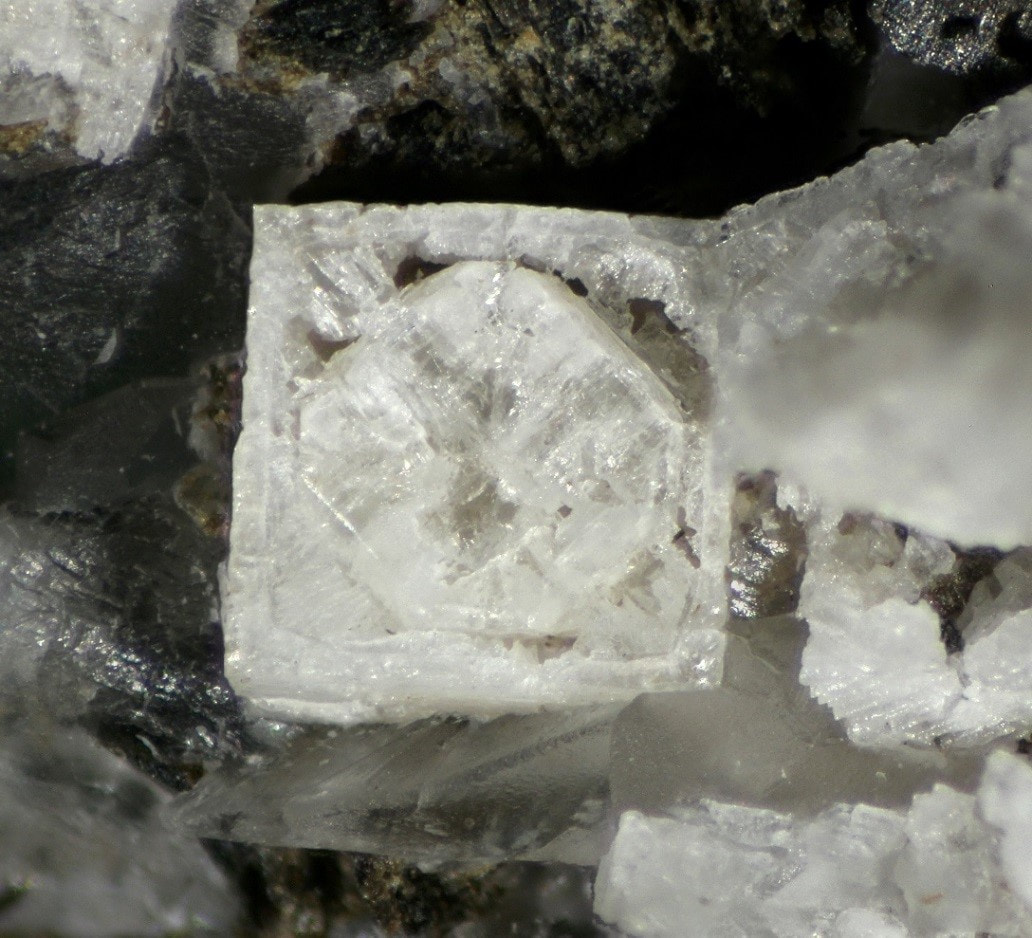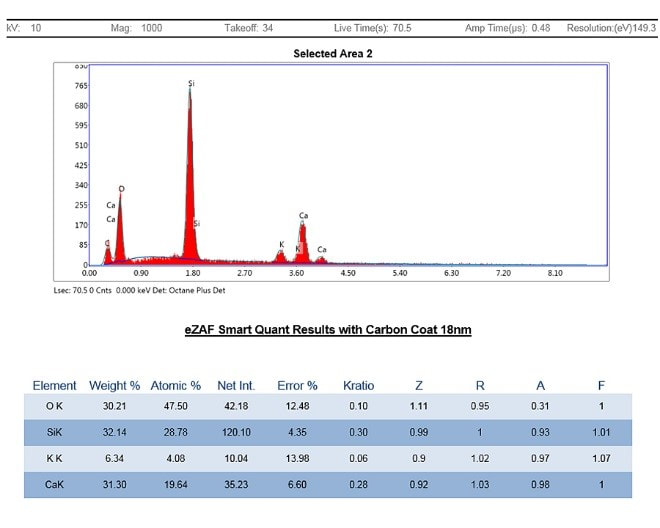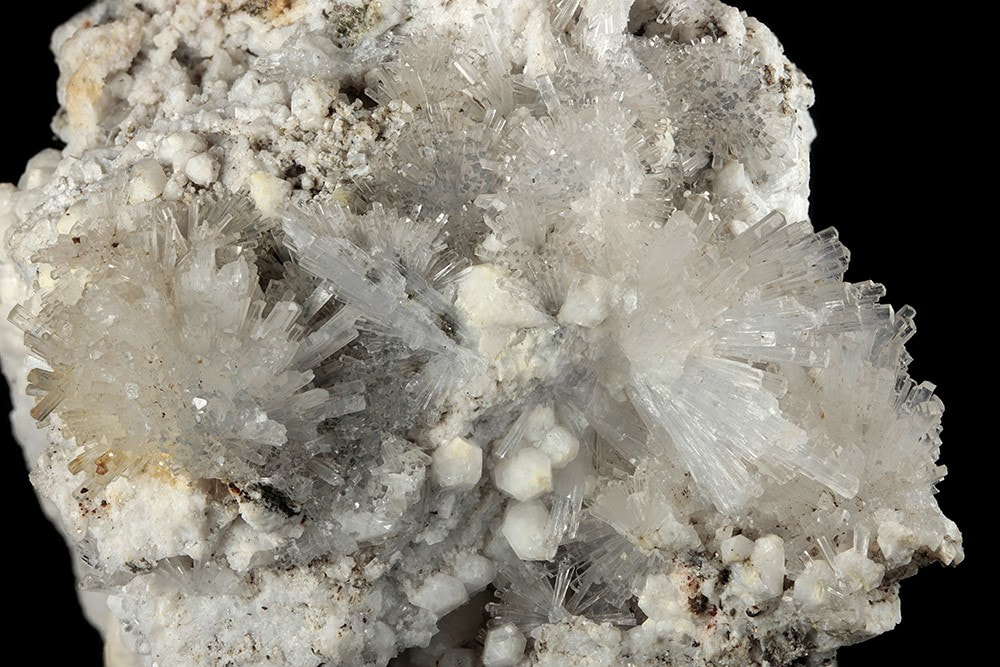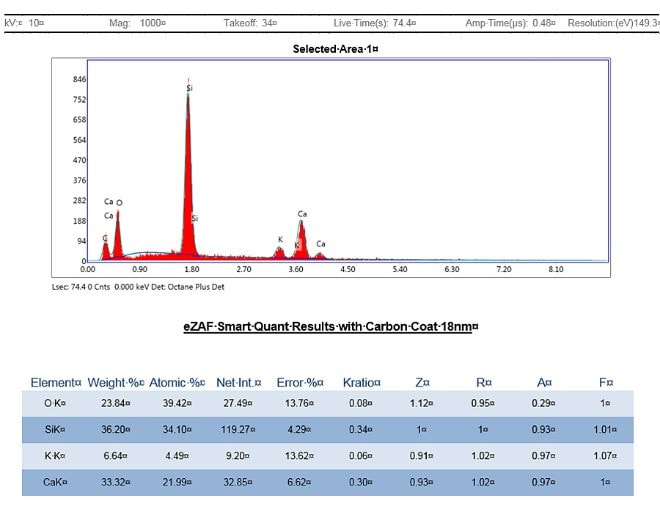The goals of this project were to better determine the particular species of apophyllite on the specific samples and from that information hopefully extend the species identifications to unanalyzed specimens from the same localities, and perhaps throughout the state. Consequently, at least one sample was selected from most known localities with 3 samples submitted from the very prolific O&G locality.
Below is a table of the samples (all from my collection) followed by a discussion of the results.
Apophyllite crystals are common in Connecticut only at a few places in the basalt flows (trap rock) where there is significant mineralization in gas vesicles and fractures. These are primarily the two O&G quarries in Woodbury (No. 1) and on the Woodbury/Southbury line (No. 2) and the Roncari Quarry in East Granby. It is also less commonly found at the quarry at Reed’s Gap on the Durham/ Wallingford line (a sample I submitted from there turned out to be the wrong mineral, so it is excluded from this discussion), rarely at the Balf Quarry, Newington and at Hamden’s old Pine Rock Quarry and the old trap rock quarry in Cheshire. In this geo-environment it typically occurs with pumpellyite, calcite, quartz, babingtonite and zeolite group minerals (stilbite, heulandite, analcime, natrolite, chabazite). Myriad attractive specimens have been saved from these localities.
Apophyllite can also rarely occur in fractures in metamorphic rocks, with one decent locality represented by the rock cut in Georgetown, where it occurs with spectacular mesolite crystals plus albite, heulandite and stilbite.
All of the SEM-EDS results shown below found the fluor/hydroxyapophyllite-(K) series, with no Na detected in any of them. Consequently, I think it is safe to conclude that any apophyllite found elsewhere in the state should belong to this series, unless it is identified at a new locality that has a very different mineral-forming geo-environment than the ones above. In that case, a full analysis should be done.
Specimen 1598

